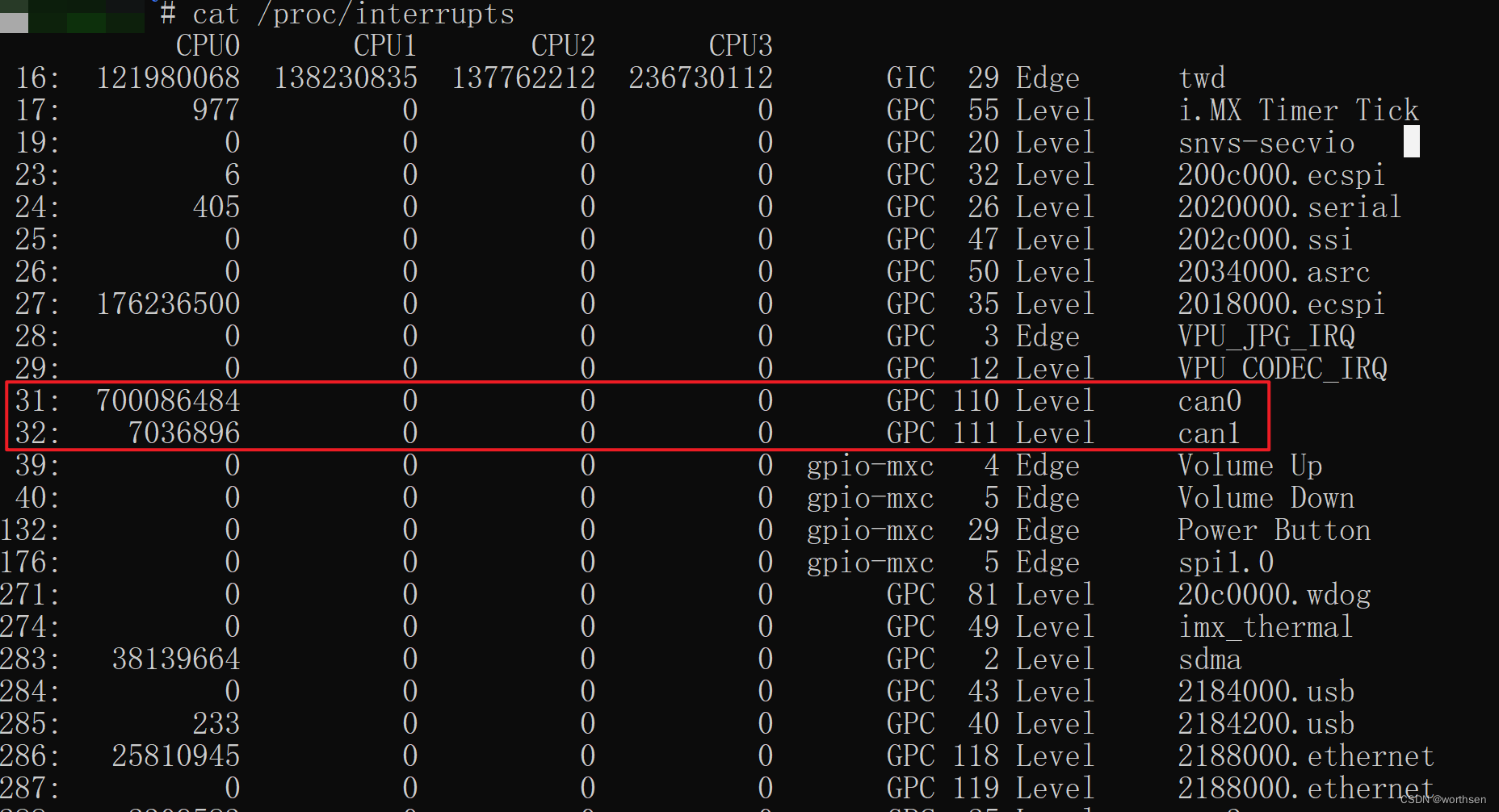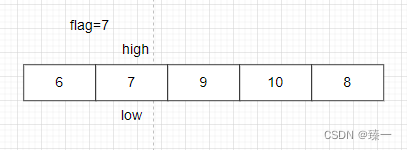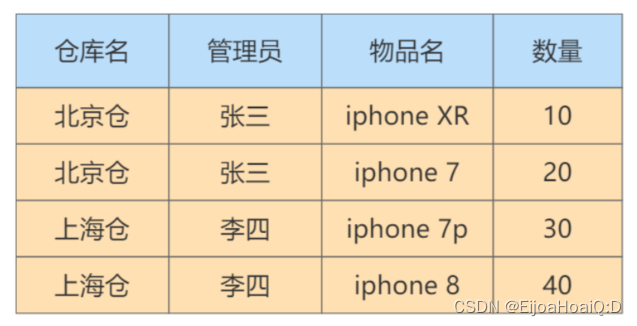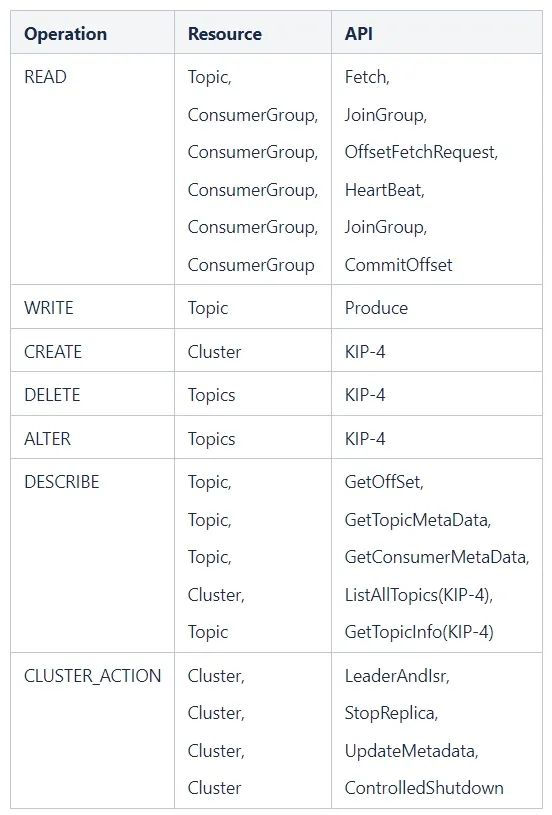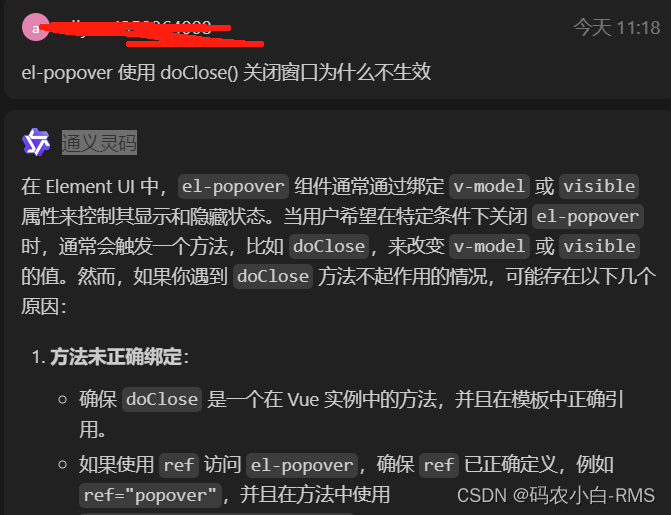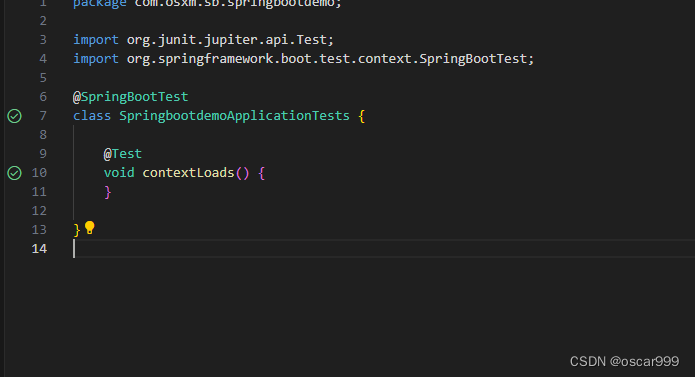LangChain之链的应用
- Chain链的应用
- 配置
- LLMChain:简单链
- create_stuff_documents_chain:文档链
- create_extraction_chain:提取信息链
- LLMMathChain:数学链
- create_sql_query_chain:SQL查询链
- 连接数据库
- 创建并使用链
- Sequential Chain:顺序链
- 创建多个链
- 合并链
- 测试顺序链
- LLMRouterChain:路由链
- 构建提示模板
- 构建目标链
- 构建路由链
- 构建默认链
- 构建多提示链
- 测试路由链
Chain链的应用
LangChain根据功能、用途的不同,提供了大量的Chain链,以下是一些Chain链的使用示例。
配置
配置OpenAI的环境变量信息,指定URL、KEY
import os
os.environ["OPENAI_BASE_URL"] = "https://xxxx.com/v1"
os.environ["OPENAI_API_KEY"] = "sk-BGFnOL9Q4c99B378B66cT3BlBKFJ28839b4813bc437B82c2"
LLMChain:简单链
LLMChain是最基础也是最常见的链。LLMChain结合了语言模型推理功能,并添加了PromptTemplate和Output Parser等功能,将模型输入输出整合在一个链中操作。它利用提示模板格式化输入,将格式化后的字符串传递给LLM模型,并返回LLM的输出。这样使得整个处理过程更加高效和便捷。
from langchain.chains.llm import LLMChain
from langchain_core.prompts import PromptTemplate
from langchain_openai import OpenAI
# 原始字符串模板
template = "猪八戒吃{fruit}?"
# 创建模型实例
llm = OpenAI(temperature=0)
# 创建LLMChain
llm_chain = LLMChain(
llm=llm,
prompt=PromptTemplate.from_template(template))
# 调用LLMChain,返回结果
result = llm_chain.invoke({"fruit": "人参果"})
print(result)
create_stuff_documents_chain:文档链
create_stuff_documents_chain链将获取文档列表并将它们全部格式化为提示(文档列表),然后将该提示传递给LLM。
注意:
它会传递所有文档,因此需要确保它适合LLM的上下文窗口。
from langchain_openai import ChatOpenAI
from langchain_core.documents import Document
from langchain_core.prompts import ChatPromptTemplate
from langchain.chains.combine_documents import create_stuff_documents_chain
# 创建提示模板
prompt = ChatPromptTemplate.from_messages(
[("system", """根据提供的上下文: {context} \n\n 回答问题: {input}""")]
)
# 初始化大模型
llm = ChatOpenAI(model="gpt-3.5-turbo")
# 构建链
chain = create_stuff_documents_chain(llm, prompt)
# 定义文档内容
docs = [
Document(page_content="杰西喜欢红色,但不喜欢黄色"),
Document(page_content="贾马尔喜欢绿色,有一点喜欢红色"),
Document(page_content="玛丽喜欢粉色和红色")
]
# 执行链
res = chain.invoke({"input": "大家喜欢什么颜色?", "context": docs})
print(res)
杰西喜欢红色,贾马尔喜欢绿色和有一点红色,玛丽喜欢粉色和红色。
create_extraction_chain:提取信息链
create_extraction_chain是一个从文章、段落中提取信息的链。
使用OpenAI函数调用从文本中提取信息,定义一个模式,指定从LLM输出中提取的属性,然后使用create_extraction_chain和OpenAI函数调用来提取所需模式。
from langchain.chains import create_extraction_chain
from langchain_openai import ChatOpenAI
# 模式
schema = {
# 人的属性
"properties": {
"name": {"type": "string"},
"height": {"type": "integer"},
"hair_color": {"type": "string"},
},
# 允许模型只返回的属性
"required": ["name", "height"],
}
# 输入
inp = """亚历克斯身高 5 英尺。克劳迪娅比亚历克斯高 1 英尺,并且跳得比他更高。克劳迪娅是黑发女郎,亚历克斯是金发女郎。"""
# 初始化大模型
llm = ChatOpenAI(temperature=0, model="gpt-3.5-turbo")
# 构建链
chain = create_extraction_chain(schema, llm)
# 执行
res = chain.invoke(inp)
print(res)
执行日志:
{'input': '亚历克斯身高 5 英尺。克劳迪娅比亚历克斯高 1 英尺,并且跳得比他更高。克劳迪娅是黑发女郎,亚历克斯是金发女郎。',
'text': [
{'name': '亚历克斯', 'height': 5},
{'name': '克劳迪娅', 'height': 1, 'hair_color': '黑发'}
]}
LLMMathChain:数学链
LLMMathChain将用户问题转换为数学问题,然后将数学问题转换为可以使用 Python 的 numexpr 库执行的表达式。使用运行此代码的输出来回答问题
使用LLMMathChain,需要安装numexpr库:
pip install numexpr
from langchain_openai import OpenAI
from langchain.chains import LLMMathChain
# 初始化大模型
llm = OpenAI()
# 创建链
llm_math = LLMMathChain.from_llm(llm)
# 执行链
res = llm_math.invoke("100 * 20 + 100的结果是多少?")
print(res)
执行日志:
{'question': '100 * 20 + 100的结果是多少?', 'answer': 'Answer: 2100'}
create_sql_query_chain:SQL查询链
create_sql_query_chain是创建生成SQL查询的链,用于将自然语言转换成数据库的SQL查询。
连接数据库
SQLDatabaseChain 可与 SQLAlchemy 支持的任何 SQL 方言一起使用,例如 MS SQL、MySQL、MariaDB、PostgreSQL、Oracle SQL、Databricks 和 SQLite。
这里使用MySQL数据库,需要安装pymysql
pip install pymysql
from langchain_community.utilities import SQLDatabase
# 连接 sqlite 数据库
# db = SQLDatabase.from_uri("sqlite:///demo.db")
# 连接 MySQL 数据库
db_user = "root"
db_password = "12345678"
db_host = "IP"
db_port = "3306"
db_name = "demo"
db = SQLDatabase.from_uri(f"mysql+pymysql://{db_user}:{db_password}@{db_host}:{db_port}/{db_name}")
print("数据库方言:",db.dialect)
print("获取数据表:",db.get_usable_table_names())
# 执行查询
res = db.run("SELECT count(*) FROM tb_users;")
print("查询结果:",res)
数据库方言: mysql
获取数据表: ['tb_orders', 'tb_users']
查询结果: [(5,)]
创建并使用链
初始化语言模型并构建链
from langchain_openai import ChatOpenAI
# 初始化大模型
llm = ChatOpenAI(model="gpt-3.5-turbo", temperature=0)
chain = create_sql_query_chain(llm=llm, db=db)
response = chain.invoke({"question": "数据表tb_users中有多少用户?"})
print(response)
执行结果如下:
SELECT COUNT(`id`) AS total_users FROM `tb_users`;
Sequential Chain:顺序链
一条链的输出直接馈送到下一条链的链
创建多个链
创建多个LLMChain链
# 导入所需要的库
from langchain.chains.llm import LLMChain
from langchain_core.prompts import PromptTemplate
# 初始化语言模型
from langchain_openai import OpenAI
llm = OpenAI()
# 创建第一个LLMChain:生成小说人物的概述
template = """
你是一名小说文学家,请你根据小说名称与人物,为小说人物写一个100字左右的概述。
小说: {book}
人物: {name}
小说人物的概述:
"""
# 创建模板实例
prompt_template = PromptTemplate(
input_variables=["book", "name"],
template=template
)
# 使用LLMChain
description_chain = LLMChain(
llm=llm,
prompt=prompt_template,
output_key="description"
)
# 创建第二个LLMChain:根据小说人物的概述写出人物评论
template = """
你是一位文学评论家,请你根据小说人物的概述,写一篇100字左右的评论。
小说人物概述: {description}
小说人物的评论:
"""
prompt_template = PromptTemplate(
input_variables=["description"],
template=template
)
comments_chain = LLMChain(
llm=llm,
prompt=prompt_template,
output_key="comments"
)
# 创建第三个LLMChain:根据小说人物的概述和评论写一篇宣传广告
template = """
你是一名广告策划师,请根据小说人物的概述与评论写一篇宣传广告,字数50字左右。
小说人物概述: {description}
小说人物的评论: {comments}
宣传广告:
"""
prompt_template = PromptTemplate(
input_variables=["description", "comments"],
template=template
)
promotionalAd_chain = LLMChain(
llm=llm,
prompt=prompt_template,
output_key="promotionalAd"
)
合并链
使用SequentialChain,将三个链合并,按顺序运行三个链
from langchain.chains.sequential import SequentialChain
overall_chain = SequentialChain(
chains=[description_chain, comments_chain, promotionalAd_chain],
input_variables=["book", "name"],
output_variables=["description", "comments", "promotionalAd"],
verbose=True
)
测试顺序链
运行链并打印结果
result = overall_chain.invoke({
"book": "西游记",
"name": "猪八戒"
})
print(result)

LLMRouterChain:路由链
针对场景,可以构建不同的目标链。LangChain通过LLMRouterChain来自动引导大语言模型选择不同的模板,以应对不同类型的问题。
LLMRouterChain又称路由链,具备动态选择适用于特定输入的下一个链的能力。它能够根据用户提出的问题内容,自动确定最适合处理该问题的模板,并将问题发送至相应模板进行回答。如果问题不匹配任何预定义的处理模板,系统将将其发送至默认链进行处理。
构建提示模板
假设有2种场景:
1.询问小说人物角色信息
2.询问小说人物角色性格特征
然后分别对应场景构建两个提示信息的模板
# 构建两个场景的模板
hobby_template = """
你是一名小说文学家,非常熟悉小说西游记,知晓小说人物的爱好信息。
问题: {input}
"""
nature_template = """
你是一名小说文学家,非常熟悉小说西游记,知晓小说人物的性格特征。
问题: {input}
"""
# 构建提示信息
prompt_list = [
{
"id": "hobby",
"description": "回答关于小说人物的爱好信息问题",
"template": hobby_template,
},
{
"id": "nature",
"description": "回答关于小说人物的性格特征问题",
"template": nature_template,
}
]
构建目标链
循环构建提示信息列表prompt_list,构建目标链,分别负责处理不同的场景问题。
from langchain.chains.llm import LLMChain
from langchain.prompts import PromptTemplate
# 初始化语言模型
from langchain_openai import OpenAI
llm = OpenAI()
chain_map = {}
for template in prompt_list:
prompt = PromptTemplate(
template=template['template'],
input_variables=["input"]
)
print("目标链提示: ", prompt)
chain = LLMChain(
llm=llm,
prompt=prompt,
verbose=True
)
chain_map[template["id"]] = chain
目标链提示: input_variables=['input'] template='\n你是一名小说文学家,非常熟悉小说西游记,知晓小说人物的爱好信息。\n问题: {input}\n'
目标链提示: input_variables=['input'] template='\n你是一名小说文学家,非常熟悉小说西游记,知晓小说人物的性格特征。\n问题: {input}\n'
构建路由链
构建路由链,负责查看用户输入的问题,确定问题的类型。
from langchain.chains.router.llm_router import LLMRouterChain, RouterOutputParser
from langchain.chains.router.multi_prompt_prompt import MULTI_PROMPT_ROUTER_TEMPLATE as RounterTemplate
# destinations = [f"{p['id']}: {p['description']}" for p in prompt_list]
destinations = []
for p in prompt_list:
destination = f"{p['id']}: {p['description']}"
destinations.append(destination)
# 将列表中的元素以换行符分隔的形式组合成一个长字符串
router_template = RounterTemplate.format(destinations="\n".join(destinations))
print("路由链模板: ", router_template)
router_prompt = PromptTemplate(
template=router_template,
input_variables=["input"],
output_parser=RouterOutputParser(),
)
print("路由链提示: ", router_prompt)
router_chain = LLMRouterChain.from_llm(
llm,
router_prompt,
verbose=True
)
执行日志:
路由链模板: Given a raw text input to a language model select the model prompt best suited for the input. You will be given the names of the available prompts and a description of what the prompt is best suited for. You may also revise the original input if you think that revising it will ultimately lead to a better response from the language model.
<< FORMATTING >>
Return a markdown code snippet with a JSON object formatted to look like:
```json
{{
"destination": string \ name of the prompt to use or "DEFAULT"
"next_inputs": string \ a potentially modified version of the original input
}}
``
REMEMBER: "destination" MUST be one of the candidate prompt names specified below OR it can be "DEFAULT" if the input is not well suited for any of the candidate prompts.
REMEMBER: "next_inputs" can just be the original input if you don't think any modifications are needed.
<< CANDIDATE PROMPTS >>
hobby: 回答关于小说人物的爱好信息问题
nature: 回答关于小说人物的性格特征问题
<< INPUT >>
{input}
<< OUTPUT (must include ```json at the start of the response) >>
<< OUTPUT (must end with ```) >>
路由链提示: input_variables=['input'] output_parser=RouterOutputParser() template='Given a raw text input to a language model select the model prompt best suited for the input. You will be given the names of the available prompts and a description of what the prompt is best suited for. You may also revise the original input if you think that revising it will ultimately lead to a better response from the language model.\n\n<< FORMATTING >>\nReturn a markdown code snippet with a JSON object formatted to look like:\n```json\n{{\n "destination": string \\ name of the prompt to use or "DEFAULT"\n "next_inputs": string \\ a potentially modified version of the original input\n}}\n```\n\nREMEMBER: "destination" MUST be one of the candidate prompt names specified below OR it can be "DEFAULT" if the input is not well suited for any of the candidate prompts.\nREMEMBER: "next_inputs" can just be the original input if you don\'t think any modifications are needed.\n\n<< CANDIDATE PROMPTS >>\nhobby: 回答关于小说人物的爱好信息问题\nnature: 回答关于小说人物的性格特征问题\n\n<< INPUT >>\n{input}\n\n<< OUTPUT (must include ```json at the start of the response) >>\n<< OUTPUT (must end with ```) >>\n'
构建默认链
如果路由链没有找到适合的链,就以默认链进行处理。
from langchain.chains.conversation.base import ConversationChain
default_chain = ConversationChain(
llm=llm,
output_key="text",
verbose=True
)
构建多提示链
MultiPromptChain类是一个多路选择链,它使用一个LLM路由器链在多个提示之间进行选择。这里使用MultiPromptChain类把多个链整合在一起,实现路由功能。
from langchain.chains.router import MultiPromptChain
chain = MultiPromptChain(
router_chain=router_chain, # 用于决定目标链和其输入的链
destination_chains=chain_map, # 将名称映射到可以将输入路由到的候选链
default_chain=default_chain, # 默认链,一个备选方案
verbose=True # 输出时是否显示链的开始和结束日志
)
测试路由链
测试1
print(chain.invoke({"input": "猪八戒的性格是怎样的?"}))
``
```python
> Entering new MultiPromptChain chain...
> Entering new LLMRouterChain chain...
> Finished chain.
nature: {'input': '猪八戒'}
> Entering new LLMChain chain...
Prompt after formatting:
你是一名小说文学家,非常熟悉小说西游记,知晓小说人物的性格特征。
问题: 猪八戒
> Finished chain.
> Finished chain.
{'input': '猪八戒', 'text': '猪八戒是一个贪吃、懒惰、贪财的人物。他喜欢吃各种美食,尤其是猪肉,经常偷懒,爱睡觉,对于任务不太认真负责,也容易被诱惑,但是同时也有一颗善良的心,对待朋友和师父都很忠诚,有时候也会表现出勇敢和机智的一面。他的性格特点给西游记带来了很多欢乐和搞笑的情节。'}
测试2
print(chain.invoke({"input": "猪八戒喜欢什么?"}))
> Entering new MultiPromptChain chain...
> Entering new LLMRouterChain chain...
> Finished chain.
hobby: {'input': '猪八戒'}
> Entering new LLMChain chain...
Prompt after formatting:
你是一名小说文学家,非常熟悉小说西游记,知晓小说人物的爱好信息。
问题: 猪八戒
> Finished chain.
> Finished chain.
{'input': '猪八戒', 'text': '猪八戒是《西游记》中的主要角色之一,他是一头形貌丑陋、贪吃懒惰的猪妖,原名八戒,后被观音菩萨改名为猪八戒。他喜欢吃喝玩乐,贪图享受,经常偷懒逃避打坐修炼,但也有时候会表现出勇敢和善良的一面。他的武器是铁扇子,擅长变化法术。猪八戒最爱的就是吃,尤其是腊肉、酒和水果,经常被孙悟空和唐僧教训。他的性格幽默诙谐,经常说些搞笑的话,是《西游记》中最受欢迎的'}
测试3
print(chain.invoke({"input": "如何提升编程技能?"}))
> Entering new MultiPromptChain chain...
> Entering new LLMRouterChain chain...
> Finished chain.
None: {'input': '如何提升编程技能?'}
> Entering new ConversationChain chain...
Prompt after formatting:
The following is a friendly conversation between a human and an AI. The AI is talkative and provides lots of specific details from its context. If the AI does not know the answer to a question, it truthfully says it does not know.
Current conversation:
Human: 如何提升编程技能?
AI:
> Finished chain.
> Finished chain.
{'input': '如何提升编程技能?', 'history': '', 'text': ' 提升编程技能的最佳方法是不断练习和学习。首先,您可以通过阅读相关的编程书籍和教程来学习基础知识。然后,您可以尝试解决一些挑战性的编程问题,这样可以帮助您加强对编程语言的理解。除此之外,参与开源项目和与其他程序员交流也是提升编程技能的有效方式。另外,保持好奇心和学习新技术也是非常重要的。最重要的是,坚持不懈地练习和学习,您的编程技能一定会得到提升。'}
